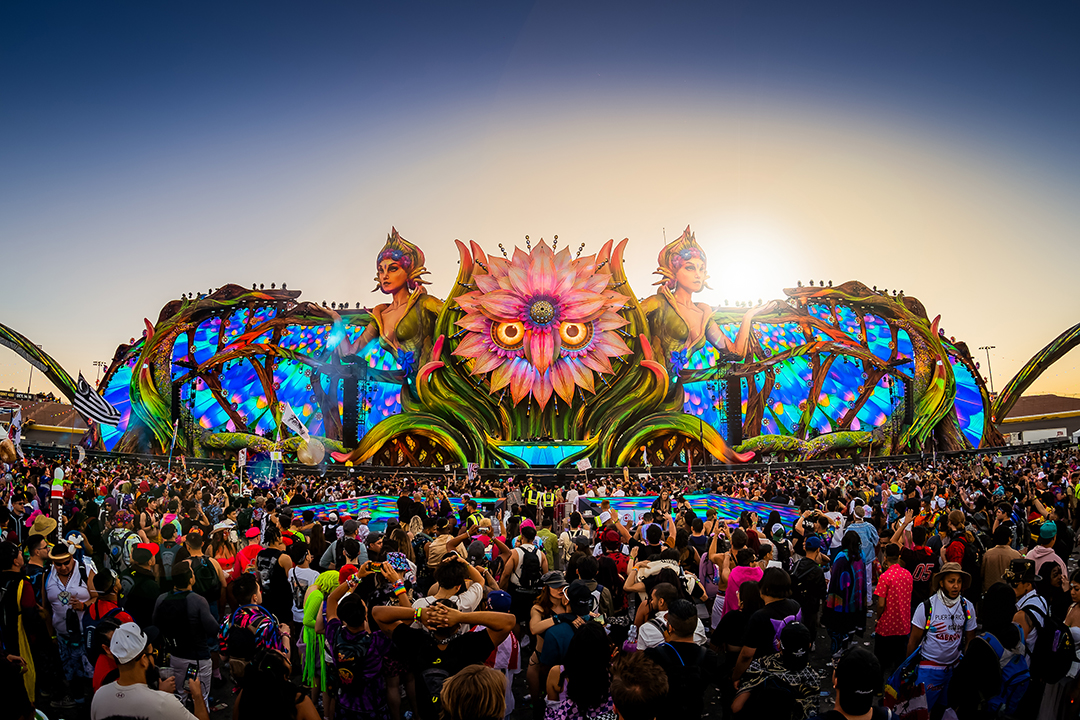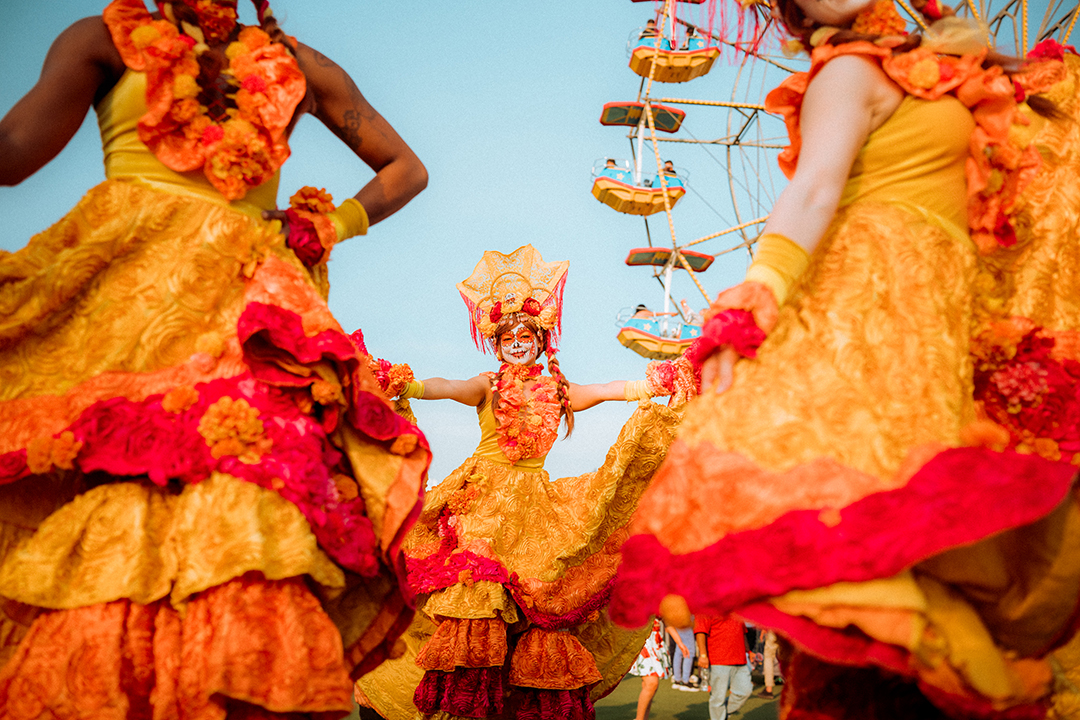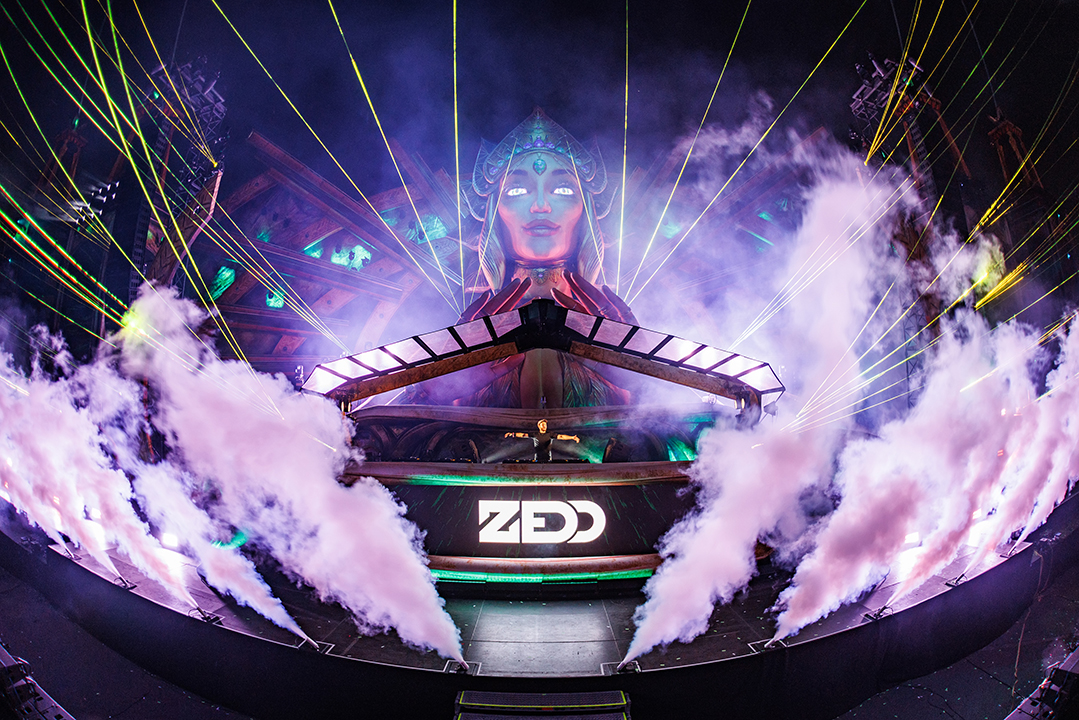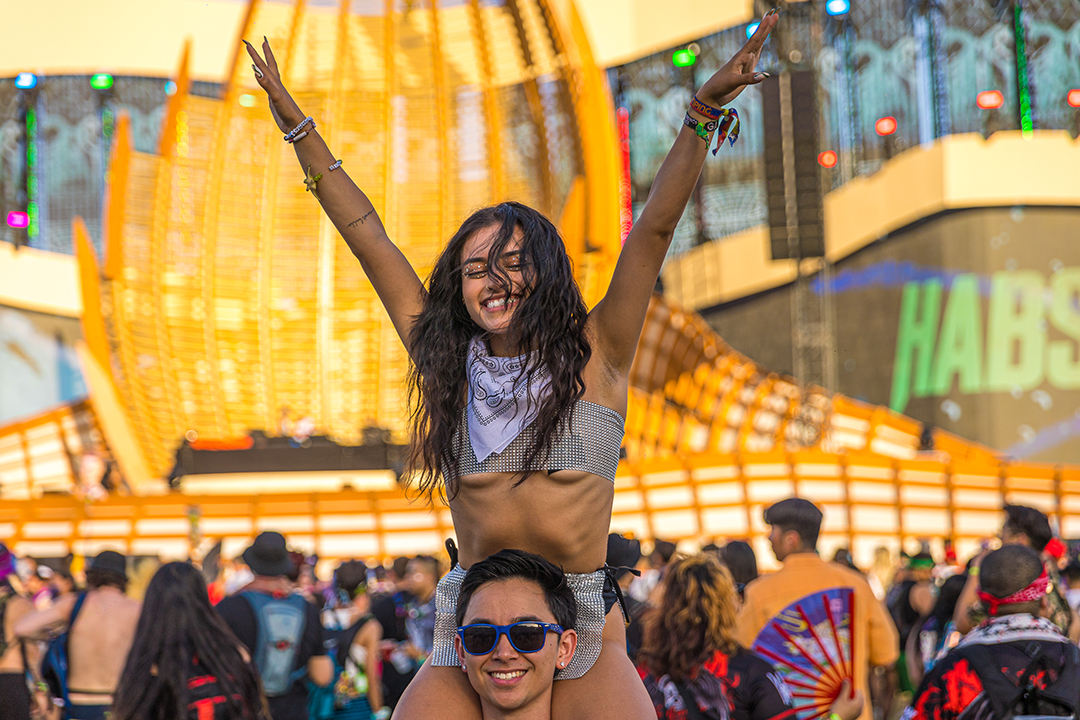Electric Daisy Carnival is a brand that seamlessly transforms reality into a realm of bright lights, loud music, and laughter that can be felt long after the festival’s finale.
But EDC has also expanded the world-renowned event from its most popular location in Las Vegas to multiple different sites including Mexico City.
And with EDC Mexico coming to a close and EDC Las Vegas right around the corner, it can be intriguing to think about the similarities and differences between the domestic and international festivals and which one is right for you.
Whether you’re considering going to one versus the other or just curious about the diversity between the two worlds, read below about how the two EDC events can be so harmonious yet so different.

Production
When thinking of an EDC event, the first things that come to mind are fireworks, bright lights, and over-the-top stage designs.
EDC Las Vegas nails that production to a T. Everything at EDC Las Vegas is bigger, louder, and brighter.
Unfortunately, production can’t compare at EDC Mexico. Some stage designs seem oversimplified and underwhelming. Sound quality also isn’t up to par with sets that are a little too quiet and sound bleed which is hard to ignore.
EDC Mexico has historically been limited in the amount of pyrotechnics and fireworks allowed during the festival because of pollution and smog in the area. EDC Las Vegas has more flare in general with highly decorated stages and immersive designs.
It is really unique, though, to see Mexican culture incorporated into the EDC Mexico design such as luchadores performers and street food vendors.
One aspect that EDC Mexico excels in, however, is the production of their activations and sponsorships.
The activations at EDC Mexico are very interactive, user-friendly, and offer so many freebies to those who stop by. Sponsorship structures in Mexico are larger than life with bright neon lights that pull you into their orbit and add to the carnival theme of EDC.
Music
EDC Mexico and EDC Las Vegas tend to have very similar lineups each year. Both festivals are held over three days with comparable amounts of performances each day.
Both rosters are fairly diverse across the electronic music spectrum with sets for the bass babes, house heads, techno snobs, and everyone in between.
EDC Mexico also uniquely incorporates local artists and Mexican culture into their sets with DJs really leaning into the Latin tracks to add additional ambiance to the foreign festival that the locals go crazy for.
But even though the lineups are diverse, the demographic is way different. For example, crowds at EDC Las Vegas are relatively spread out with the possibility of more densely packed bass stages due to the current prevalence of bass music in America.
In Mexico, however, house and techno music are far more popular. This leads to more densely packed house and techno stages with the bass stages being ghost towns.

Vibes
Similar to many other foreign festivals, the culture at EDC Mexico is significantly different than any other American event.
The crowd at EDC Mexico doesn’t quite embrace rave culture the way that Americans do. You won’t see much kandi trading or groups interacting with each other and people at EDC Mexico tend to keep to themselves.
EDC Las Vegas, on the other hand, fosters an environment for dancing with others, meeting new people, and connecting as a community.
EDC Mexico is also all ages whereas EDC Las Vegas is an 18+ event. It’s not uncommon to see kids and families at EDC Mexico and, personally, I think it’s cute to see responsible families at raves, but others may be bothered by it.
A family dynamic works well at EDC Mexico because there seems to be more room and an easier flow to the event. People are kind and considerate because they have the room to be.
EDC Las Vegas continues to face complaints year after year of being oversold leading to pushing and shoving to get through crowds. It’s also challenging to get a good viewing spot at EDC Las Vegas unless you get to the stage 30+ minutes before the performance you want to see.
Attending EDC Mexico with a big squad has the benefits of enjoying a fun rave weekend with your friends while having plenty of space to move and easily see multiple sets from good spots.
Venue
Both events are housed at speedways of similar sizes with small art cars and roaming performers but EDC Las Vegas sports eight main stages compared to EDC Mexico’s six main stages.
The terrain at both venues pose challenges to navigation, but for different reasons. EDC Las Vegas is primarily concrete grounds, which allows for smooth, easy travel but can be uncomfortable to sit on if you want to rest and relax during a set.
EDC Mexico, on the other hand, has various different mediums including grass, concrete, and gravel, covered by a thin turf-like tarp. It’s quite difficult to walk around the venue on the uneven gravel and tripping over ditches in the grass is not uncommon. People with differing abilities may find the terrain impossible to bear at times.
If you can find an even spot of turf to rest your bones on though, it feels heavenly after a long weekend.

Camping Vs. Not Camping
EDC Las Vegas offers the option to camp at the venue in Camp EDC, whereas EDC Mexico does not have this luxury. Camping at a festival presents the opportunity to truly escape reality and immerse yourself in the festival for the weekend.
With both festivals being quite some distance from cities and civilization, camping can be a huge benefit for most festivalgoers. For those who like to camp, not having to find transportation to and from the festival can be a game changer.
Camping at EDC Las Vegas makes sense as well because music continues until sunrise. EDC Mexico, however, only has music until 2AM. For me, there’s nothing better than seeing a sunrise set and stumbling back to camp on tired legs at the end of the day.
Although transportation can be a drag, EDC Mexico offers far more accessible ways to get to the venue than EDC Las Vegas. Many people opt to take public transportation making camping less of a necessity.
Affordability
Due to conversion rates, EDC Mexico can be far more affordable for American ravers. Early bird three-day tickets for EDC Mexico run around $190 compared to EDC Las Vegas’s three-day pass costing around $380.
VIP upgrades show the most shocking price differences between the events. Enhanced experience passes for EDC Mexico cost $340 for three days versus a whopping $1,200 at EDC Las Vegas.
Both EDC events offer a Skydeck experience which includes premium viewing spots (sometimes front of house), bottle service for your group, and VIP upgrades. Based on tier, number of people, and location, Skydeck at EDC Mexico can cost $2,000-$5,700 per day compared to the astronomical amounts of $3,000-$20,000+ at EDC Las Vegas.
Upgrades at EDC Mexico feel like true VIP experiences. Elevated viewing platforms are top-tier with plenty of space to move around. VIP at EDC Mexico includes private golf cart rides for easy access to most stages and exclusive benefits like secret silent discos.
Other expenses like food are also significantly more affordable at EDC Mexico. You can easily get esquites, tacos, hamburgers, and hot dogs for $3-10 whereas a meal can easily run for $25 at EDC Las Vegas. Drinks are also cheaper at EDC Mexico as well with beer costing around $11 and tequila shots for $5.

Overall
Overall, both festivals can provide incredible experiences. It really just depends on what adventure you’re looking to have.
If you want to stay up past the wee hours of the morning in an over-the-top alternate reality, meet new people in exquisite rave outfits, and don’t really mind having a spot in the back, then EDC Las Vegas is for you!
If you want to experience VIP upgrades for a fraction of the cost, see some of your favorite artists up close and personal, and comfortably explore the festival grounds without all the frills then EDC Mexico is for you!
Featured image is EDC Mexico and photo credit to EDC Mexico.







